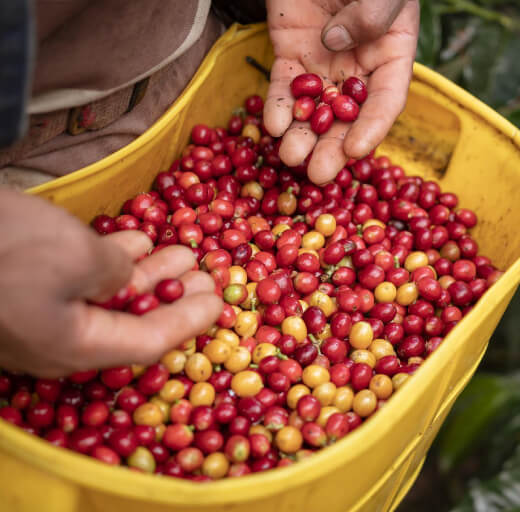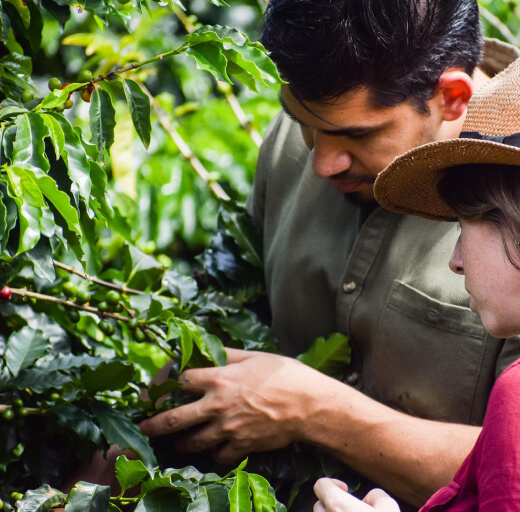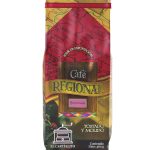Folleto Café
Download Coffee Brochure
Coffee Brochure
Download Coffee Brochure El Cafetalito
El Cafetalito de Guatemala
El Cafetalito is a company that was founded more than 50 years ago, dedicated to the production of roasted and ground coffee in Guatemala.
It began operations with three employees in a small bodega in a neighbourhood in Guatemala City. From the beginning El Cafetalito has had a spirit of enthusiasm and a desire to provide the best of Guatemalan coffee.
The story of how we started to bring it comes from a family, far away in terms of distance as they live in Guatemala, who used to bring this delicious coffee made by their cousin and we liked it so much, that we decided to bring it to make it affordable to all our customers and friends.

Process & Distribution
Guatemalan coffee is grown in plains and ravines, at different altitudes. The best coffee grows in volcanic soil, between 1,000 and 1,500 metres above sea level. The most renowned regions for the cultivation of coffee in Guatemala are the boca costa, southeast and west pacific, as well as the region of Alta Verapaz where the climatic conditions are excellent to obtain a good bean.
The coffee tree can grow up to 12 metres high, so it is important to prune to ensure not only a higher yield, but also to facilitate harvesting. Pruning is done at a height of one to one and a half metres, when the lower part of the plant is covered with a good collage.
During the flowering period, the branches of the coffee tree are filled with jasmine-like flowers, which, when fertilised, take 6 to 7 months to develop and form a ripe bean, which first turns yellow, then pink and finally red.
The Harvest
Harvesting is the most costly stage of coffee production, and begins when the skin of the fruit has turned cherry-coloured, the task is a delicate one, as care must be taken not to damage the leaves, buds or cut the unripe fruit.
In Guatemala, the coffee harvest varies according to climate and altitude, and as coffee does not ripen at the same time, it is harvested between August and December in warm climate zones and between November and April in the cold lands, this stage requires a large number of men and women who carry baskets along the paths of the coffee plantations and with their hands pluck the red beans from the branches. At the end of the day they carry the harvests in sacks to the wet mill, where it is dressed in crates and weighed in a weighing machine in order to give back the size of the harvest carried out during the day.
The Benefit
Coffee processing consists of a series of procedures that help to free the coffee from the 4 wrappings that protect it:
- The cherry husk or pulp.
- The mucilage enveloping the 2 grains
- The parchment
- The thin silky film that protects the gold grain.

In the dry method, the beans are left to dry in the sun with the husk and purple, which is highly dependent on a long dry and warm period of time.
A wet mill consists of large pulperos, fermentation tanks or piles, washing areas and large concrete patios, formerly made of calicanto for drying, washing and drying, which are the different phases of the wet mill.
After pulping, the coffee rests in water tanks or basins to ferment. It remains there for 24 to 36 hours so that the 'honey' mucilage or viscous matter is released from the beans. Uniform fermentation preserves the quality of the 'café' coffee.
Then the coffee is washed to remove the mucilage and clean it for a period of 24 to 72 hours. Afterwards, the coffee is passed through a winnower to clean it of all dust and rubbish, a sieve also separates it from all inorganic matter, such as sand or stones that come mixed with the coffee when it is dried in the open air in the patios.
After selection, the coffee is packed in natural fibre sacks and stored on a wooden floor or wooden pallets and walls with a wooden lining, separating the sacks in a row, without touching the walls or being close to the tin roof. It should not be placed near other aromatic products so that it does not acquire other smells or flavours.






